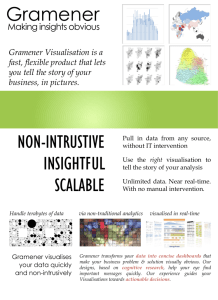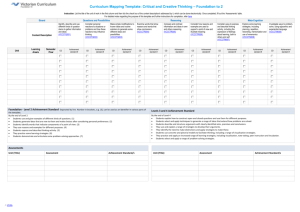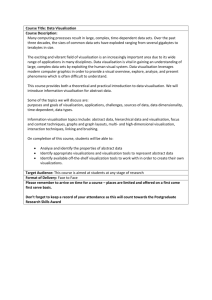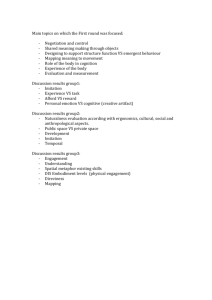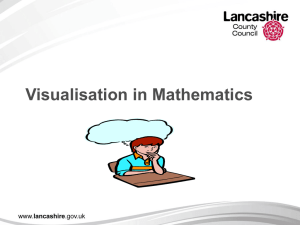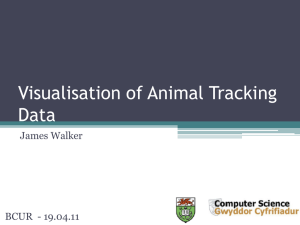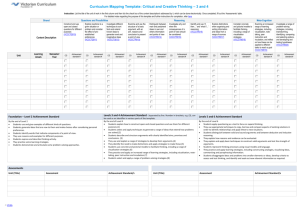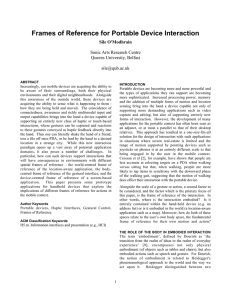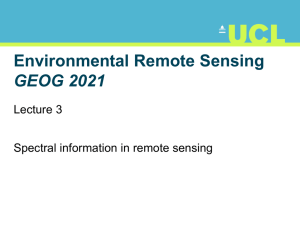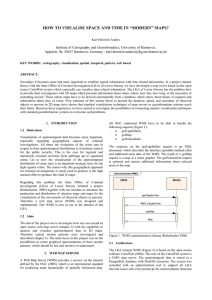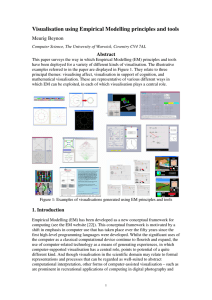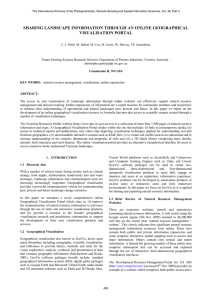PowerPointPresentation
advertisement
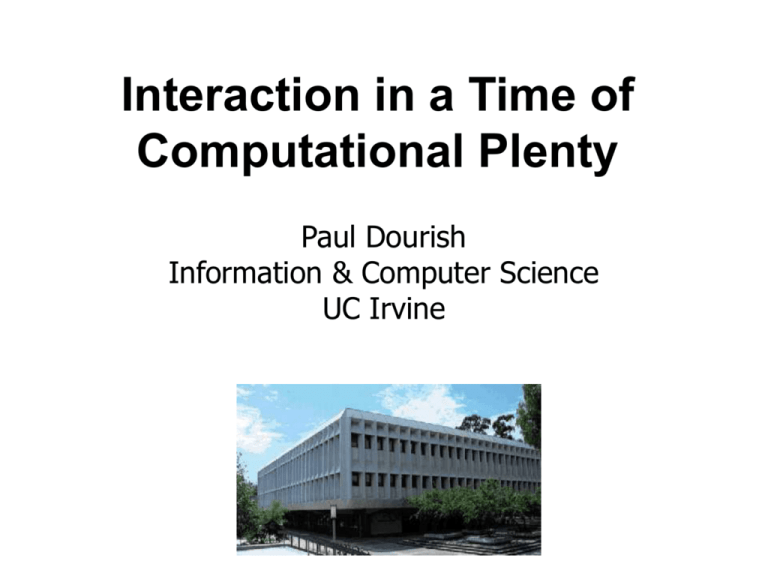
Interaction in a Time of Computational Plenty Paul Dourish Information & Computer Science UC Irvine my background • research topics – CSCW & HCI • computer scientist with bad influences… • media spaces, awareness, UI architectures, CSCW toolkits, ethnographic studies, information management… • research history – – – – Xerox Research Center Europe (EuroPARC) Apple Computer Computer Science Lab @ Xerox PARC Information & Computer Science @ UCI what do these have in common? what’s the difference? premise • everyday computer use is like archeology – the 1970’s… • menus, windows, icons – or worse…! • dialog • commands • representation and structure – regular – predefined – uniform moore’s law moore’s law • for years, performance has driven applications • for apps today, performance is nearly irrelevant – word processing doesn’t require 1.4GHz • it’s only going to continue – ready for 4x performance in 3 years? – 80% of cycles to the UI – animated windows? or time for a new approach? • three ideas… placeless documents • personal & workgroup document collections – no fixed hierarchies or structures placeless documents • personal & workgroup document collections – no fixed hierarchies or structures H:\dourish\inprogress\talks\tecfa\presto.ppt Type = talk Author = dourish Status = in progress Backup = true Topic = presto Format = Powerpoint Forum = tecfa placeless documents • personal & workgroup document collections – no fixed hierarchies or structures – documents and properties – do away with predefined structure • systems today are fast enough to create structure when we need it • creating structures depending on circumstance – who’s looking (individual or group) – what they’re doing (task or role) – which documents are at hand example Filing Problems So there’s all these categories it could conceivably go under and I have to pick one. […] certainly my assessment may be different than the guy next aisle over. Filing Problems Ok now I don’t see what I thought I was looking for. So, uhm, I guess I would stick it under uh Floodplain Evaluations. What was the other spot? Drainage is usually done during the design phase and we’re not there yet. So that’s why I would pick, uhm, but see 231 is Draft Environmental Document which is pretty vague. So I’ll never find it. It’s just not going to happen. I’d probably be more inclined to stick it under Drainage even though that’s not where it belongs? So that’s what I’m going to do. mutual intelligibility UFS Proj1 Group A Proj2 Group B Joe Proj3 Bob mutual intelligibility UFS Proj1 Group A Proj2 Group B Joe Proj3 Bob visualisation • information visualisation – graphical representations of complex information – moving work from the cognitive to the perceptual • visualisation as part of everyday interfaces – software systems are complex • most of the complexity is hidden • in fact, we’re afraid to present it – the physical world is comprehensible • you can see it work • how about doing the same for software? visualisation • security in networked systems – security people look for absolute security – normal users look for acceptable risk • but we don’t give people the resources to determine whether the current risk is acceptable or not visualisation • security in networked systems – security people look for absolute security – normal users look for acceptable risk UC Irvine tecfa • but we don’t give people the resources to determine whether the current risk is acceptable or not visualisation • making system structure visible – more, making it visible as a part of interaction – co-displays visualise mechanism – theoretical grounding • ethnomethodological understandings of work • the accountability of system action embodied interaction • a broader view of new interaction styles – tangible computing – social computing – a common foundation: embodiment • embodiment is about… – how you encounter technology – how meaning and practice are interrelated embodied interaction • tying together two ideas – ubiquitous/tangible computing • “beyond the desktop” – computation embodied in the world – social computing • using sociological theory for more than requirements – these ideas have a common foundation: embodiment embodied interaction • meaning and practice – “practice is, first and foremost, a process by which we can experience the world and our engagement with it as meaningful” (Etienne Wenger) – practice involves creating and sharing meaning • creating meaning the emergence of practice • practice is a primary focus for HCI and CSCW – so, a primary technical concern is to support the emergence of practice tools for evolving practice • new opportunities – technology gets more powerful daily • use this power to transform our model of interaction – the old model • fixed structures for information and interaction • people adapt to the way that technology is designed – the new model • present information in ways that make sense dynamically • let people adapt their interaction styles to circumstances • technology and interaction are mutually constituted
